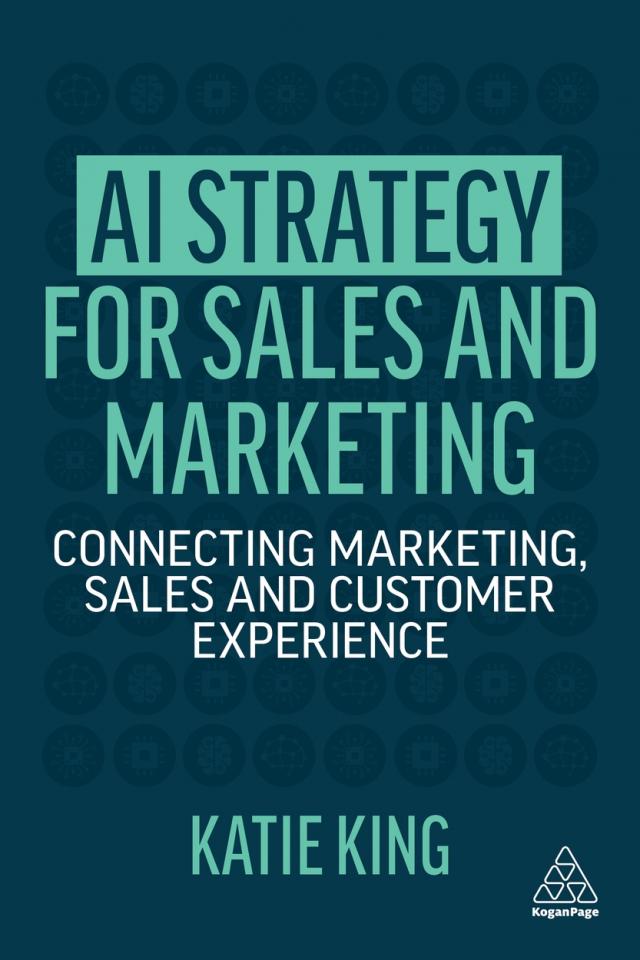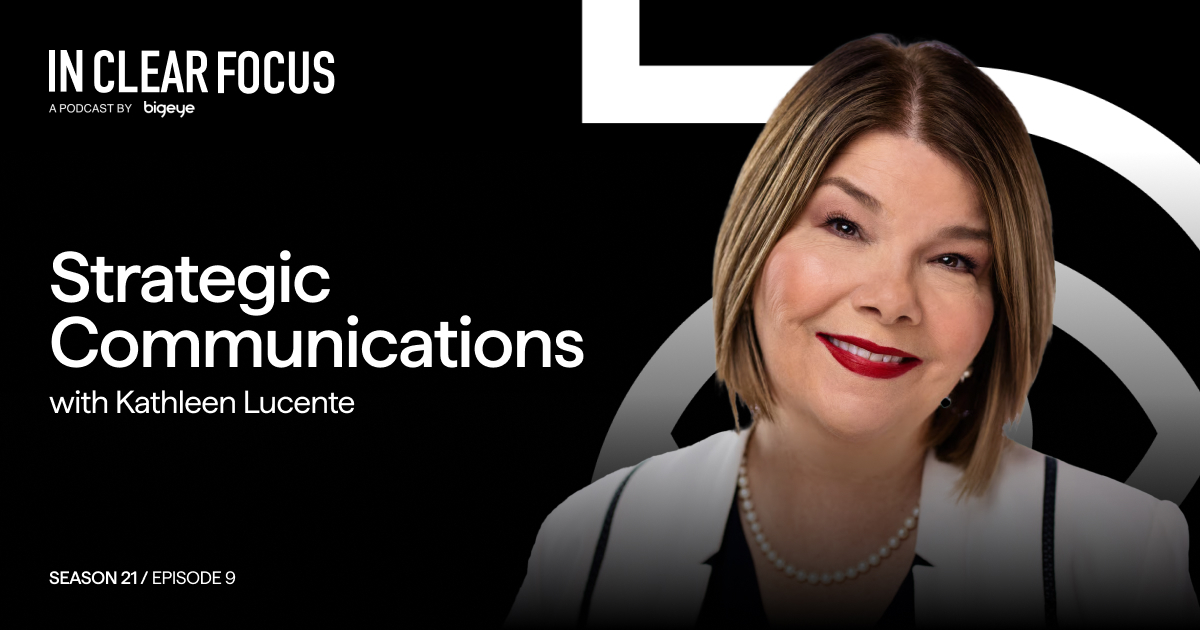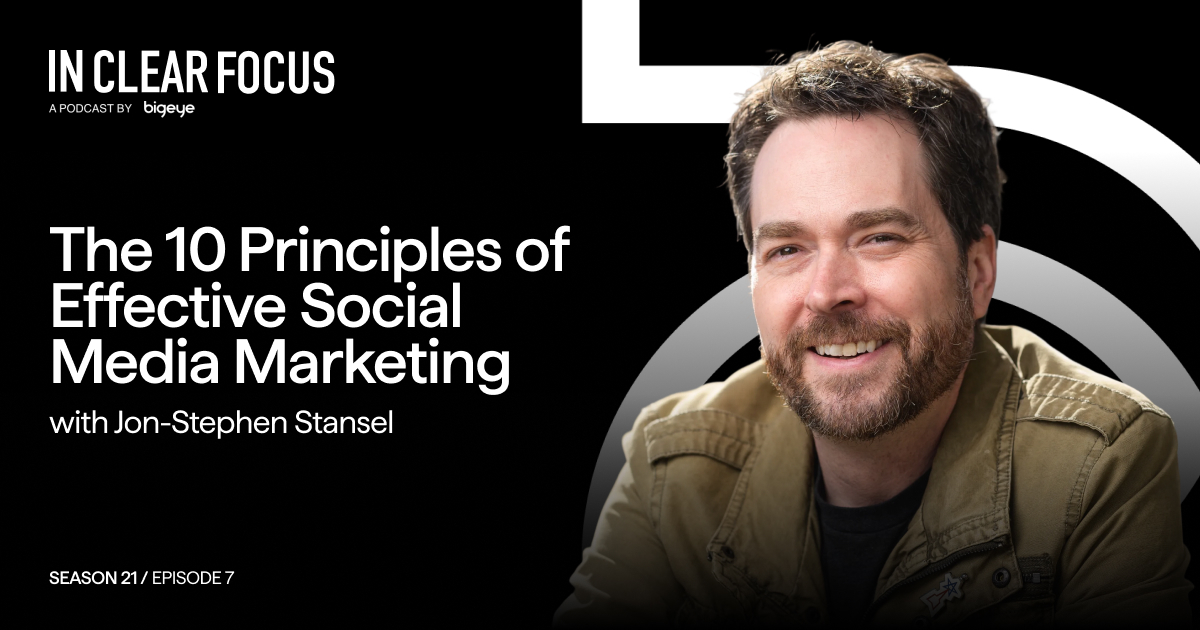IN CLEAR FOCUS returns for a tenth season, with thought leaders discussing issues affecting advertisers and marketers. New episodes will explore the impact of artificial intelligence on the industry, the evolution of the creator economy, and innovations in retail media and technology. In this preview, Karsten Kjems and Anton Sherar of Sonic Minds discuss audio branding. Dr. Andrea Laurent-Simpson reflects on the humanization of pet products ahead of the release of a national study from Bigeye.
Episode Transcript
Adrian Tennant: Coming up in this episode of IN CLEAR FOCUS:
Anton Sherar: Brands that have products, apps, or other software, they have a major opportunity to get their audio identity out in the world at a much faster rate. So with the rising popularity of electric cars, there’s a rising demand for great sound design and companies such as Tesla, Volvo, Volkswagen, they are taking advantage of this to great effect.
Andrea Laurent-Simpson: When I think of multi-species families, I’m thinking of the families that we see today where we have dogs and cats specifically being thought of as actual family members, and in many cases being given human identities, familial identities, like brother, sister, child, within the family.
Adrian Tennant: You’re listening to IN CLEAR FOCUS: fresh perspectives on the business of advertising. Produced weekly by Bigeye: a strategy-led, full-service creative agency, growing brands for clients globally. Hello, I’m your host, Adrian Tennant, Chief Strategy Officer. Thank you for joining us. IN CLEAR FOCUS is returning for a tenth season. In each episode, we feature industry experts and thought leaders discussing trends and issues affecting advertising and marketing professionals. In our new season, we’ll be exploring the impact of artificial intelligence on the industry, looking at the evolution of the creator economy, and discussing the innovations in retail media and technology that are changing how consumers shop. But that’s not all – IN CLEAR FOCUS episodes will also be delving into the applications of semiotics in marketing, examining brand purpose, and exploring sustainability. Of course, developing a great marketing strategy requires deep consumer insights – and we’ll continue to discuss audience research methods and tools in the new season. A recurring theme has been the growth of audio branding in the US, and in the new season, we’ll be sharing a case study of a sonic identity project. Bigeye worked with the audio branding agency, Sonic Minds, based in Copenhagen, Denmark. Here’s a clip with Founder and CEO, Karsten Kjems, and audio branding consultant, sound designer, and composer, Anton Sherar.
[Music]
Adrian Tennant: Karsten, Sonic Minds has been established for over 15 years now.
Karsten Kjems: Yeah.
Adrian Tennant: Based on your experience, what elements need to be present to make a successful sonic identity?
Karsten Kjems: There are several elements. First of all, I was, well, in the beginning, I thought it was the audio logo or the music itself. But now with the insights I have today is more like the implementation. The implementation strategy is key. If you don’t know how to use and implement sound and music correctly in all the different brand touchpoints, you will not succeed in creating brand equity and a strong brand.
Adrian Tennant: Anton, most of us are familiar with royalty-free music and licensed music. What types of situations typically prompt marketers to consider commissioning custom audio branding?
Anton Sherar: That’s a great question, Adrian. We like to think of music as the soundtrack to our lives. So from our very first heartbeat, we have music inside of us and everywhere around us. And fast forward to today, where every brand tries to grab your attention, and you have a lot of responsibility as a sonic agency. So how do we make the corporate music for brands that doesn’t annoy consumers and instead adds a lot of value to the brand? The biggest challenge for a lot of brands is what music to choose in their content. And in a lot of cases, you know, the head of marketing in some company will just pick a band or a genre that they personally like. And, this can be dangerous if it doesn’t fit with the brand. So by making this bespoke music, that’s tailor made for a brand, we ensure that it’s aligned with the values and the visuals and the sonic logo as well, as much as possible.
Karsten Kjems: If I can chip in a bit, I mean, for 40 years we have seen a growth in CVI: corporate visual identities. And, for that process, people don’t just buy a standard visual logo. No, they get their own custom main font, pictures, and whatever they need. And the same should be with sound. So, I see that’s the same importance within audio, create your own sonic identity, your own bespoke music is just as equivalent as a visual part. [MUSIC]
Adrian Tennant: Karsten, the practice of audio branding has traditionally been a lot more prevalent in European countries than here in the US. Why is that, do you think?
Karsten Kjems: I’m getting that question quite a lot since I’ve been in the industry for many years now. I believe that it’s because in Denmark and in Scandinavia, but especially in Denmark, we have a strong legacy and history within sound. We were one of the first inventors of the loudspeaker. We have lots of loudspeaker companies. We have sound designer education in Denmark. We have a really strong legacy in history within sound and music. So I think we are within sound, that Swiss are within watches. So that’s why I believe that we have this first mover and also we get clients’ request from all over the world. Cause they look into Scandinavia. “You have such a nice design”, or “we like your sound of the music style there. Can you help us,” you know, “with your insights and your experience?”
Adrian Tennant: In what kinds of ways can audio branding be used within other contexts such as automobiles or built environments?
Anton Sherar: Brands that have products, apps, or other software, they have a major opportunity to get their audio identity out in the world at a much faster rate. And more brands are realizing this. So with the rising popularity of, let’s say electric cars, there’s a rising demand for great sound design and companies such as Tesla, Volvo, Volkswagen, they are taking advantage of this to great effect. And the reason why these products are so effective is that a user, first of all, uses their products a lot more often than they watch adverts, and thus they’re exposed to the sound more. There’s also this positive reinforcement that you get, such as when you turn on your car, watch a film on Netflix, or you finish a meditation and you’re greeted with this positive reward sound. So, there’s a lot of opportunity in that area of sound.
Karsten Kjems: In a digital world, there’s only two senses we can use. There’s seeing and hearing. And many brains today are mostly on digital platforms, and if you then capitalize the audio landscape there, then you can really get a strong recognition with using the sound. For instance, Netflix, I don’t recall I’ve seen a Netflix commercial as per se, but every time I wanna kind of go on Netflix and see a film, I’m presented with the “Taaa-Dummm.” And I’m waiting for a good moment. So the brand is playing itself in the product. So I see, rather than, you know, doing a paid media, go on TV and say, next week we have this beer or this car, whatever. If you can integrate the audio in a meaningful way in the user experience, then you have a really strong opportunity to create a really strong brand.
Adrian Tennant: That was Karsten Kjems and Anton Sherar from the audio branding agency Sonic Minds. Let’s take a short break. We’ll be right back after this message.
 | Adrian Tennant: Each month in partnership with our friends at Kogan Page, the Bigeye Book Club features interviews with authors who are experts in consumer research, retail, and branding. Our featured book for January is Katie King’s book, AI Strategy for Sales and Marketing: connecting Marketing, sales, and Customer Experience. IN CLEAR FOCUS listeners can save 25 percent on a print or electronic version of Katie’s book with the exclusive promo code BIGEYE25. This code is valid for all products and pre-orders, and applies to Kogan Page’s free paperback and e-book bundle offer. When you order direct from Kogan Page, shipping is always free to the US and UK, and it helps the authors too. So to order your copy of AI Strategy for Sales and Marketing, go to KoganPage.com. That’s K O G A N P A G E, dot com. |
Adrian Tennant: Welcome back. You’re listening to a preview of the new season of IN CLEAR FOCUS. This year will see the launch of Bigeye’s national study on pet ownership. IN CLEAR FOCUS will reveal what’s changed since Bigeye’s 2019 study, and discuss some of the implications of humanizing pet products and services. Here’s a clip from an upcoming interview with Dr. Andrea Laurent-Simpson of Southern Methodist University in Dallas.
[Music]
Well, the last time we spoke on this podcast, we discussed your book, Just Like Family. For anyone that didn’t hear that episode, could you explain the book’s thesis and what the multi-species family is?
Andrea Laurent-Simpson: Of course, I think the main thrust of that book was to try and make an argument based in family demography, about how changes in mortality rates and fertility rates post-industrial revolution have changed just the American family structure in general, from one that say, early to mid 19-20th century and earlier was more of a nuclear family. Got a biological mother and father, a heterosexual couple, living under the same roof with very traditional gender roles. But with changes in mortality and fertility rates, drops in both of those rates, we started to see some fracture of that traditional family structure. Probably around the 1970s, we started to see increases in divorce rates, decreases in marital rates, and increases in cohabitation. And so the emergence of single-parent families, divorced families, stepfamilies, like lots of non-traditional family structures, that became emergent, and eventually eroded away that more traditional family structure, which continues to be somewhat dominant today, but is definitely, a much smaller percentage of family structures in the US today. In the midst of all of those changes, the argument in my book is that the multi-species family began arising in the 1970s. When I think of multi-species families, I’m thinking of the families that we see today where we have dogs and cats specifically being thought of as actual family members, and in many cases being given human identities, familial identities, like a brother, sister, child, within the family. And as a result of that, actually being afforded the privileges that come with being a family member. Also, the disparity that comes with being a family member. Whether that’s domestic violence or impoverished states, economic states, right? But, being included as part of the family. The historical kind of movement in that direction I think was prompted by industrialization and prompted by movement, within kind of technological innovation in the United States, towards forms of relationships with pets that were no longer as utilitarian in nature, um, that were no longer as rural in nature. Certainly our relationships to pets became much more urban in the late 18 hundreds and into the 19 hundreds with the disappearance of the draft horse by the early 20th century actually, so that as most of our population was living in urban areas, I guess our relationships became much different with pets or domesticated animals in particular pets, dogs, cats, and birds. So we kind of started to perceive them as pets, defined more like animals that have names, that live indoors, and that don’t really have any other purpose than entertaining us. Some researchers point to that and say, well, that’s the multi-species family. And you talk about this being, kind of a new, relatively new emergence, in terms of relationships within the family structure. But I don’t think we’re thinking of our dogs and cats anymore as simply entertainment, right? And we’re not just simply giving them names and letting them live in indoors. We’re actually, as some of your research has shown, sleeping with our animals in bed, where some of us are making food from scratch for our animals, and some of us are choosing the properties that we buy to live in based on what works for our dogs and cats. This is not a pet anymore. It’s very clearly a family. And so this is what the book is about. How that historical demographic drift and changes in family structure have really helped to lead towards the emergence of a multi-species family where our dogs and cats are like people with familial identities, and that they’re no longer disposable. They are indispensable in our families now.
Adrian Tennant: Well in Bigeye’s pet owners study, 97% consider their pets to be family members. More than four in five owners say they love and spoil their pets as if they were children. And approaching three in five owners describe their pets as being like a child to them. Andrea, did these statistics mirror what you’ve seen in your qualitative research?
Andrea Laurent-Simpson: I think definitively, especially for child-free families and for involuntarily childless families, dogs and cats have taken on a very significant role. Where these families are very aware that their dogs and cats are not actual children, but that they have bonded with them as if they’re children. And their behavior suggests that they think of them as children where they are engaged in reading stories to their pets, where they travel everywhere with their pets, where they are willing to lay out thousands of dollars for things like veterinary care to ensure that their pets have the absolute best lives possible. I think definitely the qualitative work that I have for those family structures indicates empirical support for your quantitative findings. I would also say that for families who have human children, who have young human children, there is also the tendency to identify their dogs and cats as babies, as kids, as four-legged family, but they’re much more, I think, careful to draw a line of distinction between their human children and that of their furry children. So while they may refer to their animals as children, and say that they willingly think of them that way, their behavior suggests a little bit differently, which makes sense because US society is very pro-natalist, it’s very supportive of having human children. And so once you’ve had human children, if you begin equating them or holding them on an equal level with furry children, stigmatization becomes a very real thing very quickly. Um, so I think that that also probably lends some support to the quantitative data that you’ve found here. Just kind of, I think, refining it a little bit with thinking about how different family structures are gonna impact the ways in which people think of their dogs and cats and how I think their behavior exhibits the ways in which they’ve identified their dogs and cats that way.
Adrian Tennant: In our study, four in five owners report gaining personal happiness and emotional support from having a pet. Approaching three in five owners report that they experience less anxiety or depression from having a pet. And half of all owners report that having a pet helps relieve stress. Andrea, what do these stats reveal about the perceived or real benefits of pet ownership?
Andrea Laurent-Simpson: Well, Adrian, I think this is, an interesting, ongoing methodological dispute between those in psychology, sociology, and human-animal interaction research. There is a good deal of research to support the idea that, companion animals support human health, mental health, and physical health in a number of ways. The CDC argues that bringing dogs and cats in particular into our households help to bring on decreases in blood pressure, decreases in loneliness and anxiety, and even symptoms of PTSD, that triglyceride levels are likely to drop, as well as cholesterol, bad cholesterol levels are likely to drop, and that dogs, in particular, bring on increased opportunities for exercise and outdoor activities that we may not otherwise be engaged in given the ways in which we live our lives: sitting in chairs working and staring at screens all day long. But also for older adults, the CDC has highlighted particular benefits for older adults who are likely to experience isolation, and depression, and owning a dog especially, but a cat as well, lead to greater opportunities for our elderly to socialize. Some people argue a little bit against this, like they counter that, well, maybe we see qualitative reports – although your research has offered quantitative reports – qualitative reports, where participants are highlighting all of these benefits that they perceive as happening with their animals and their relationship. There is quantitative psychological research that says the impact is actually, uh, negligible. but I think that, ultimately, and this is an argument that I’ve made multiple times as a qualitative researcher, I think that it’s better to foundationally actually listen to what people’s perceptions are and the ways in which they see their lives being bettered by this relationship than to necessarily depend on statistical measures and operationalization of variables through researchers who have well, based in the literature, decided how or what they think is the most important way with which to measure this so-called pet effect. I think those perceptions are much more important and actually was very pleased to see this quantitative support, for the pet effect in your work.
Adrian Tennant: Thank you.
[Music]
Adrian Tennant: That was Dr. Andrea Laurent-Simpson discussing the results of Bigeye’s upcoming national study of pet ownership. IN CLEAR FOCUS will continue our partnership with publisher Kogan Page, interviewing authors of new marketing books as they’re released throughout 2023. Listeners now receive a 25 percent discount on print or electronic versions of the books we feature with the exclusive promo code BIGEYE25 when ordered directly at KoganPage.com. So, I hope you’ll be able to join me, Adrian Tennant, for the new season of IN CLEAR FOCUS, produced by Bigeye. We publish episodes every Tuesday – available wherever you listen to podcasts. The new season of IN CLEAR FOCUS starts Tuesday, January 17th. Until then, goodbye.




